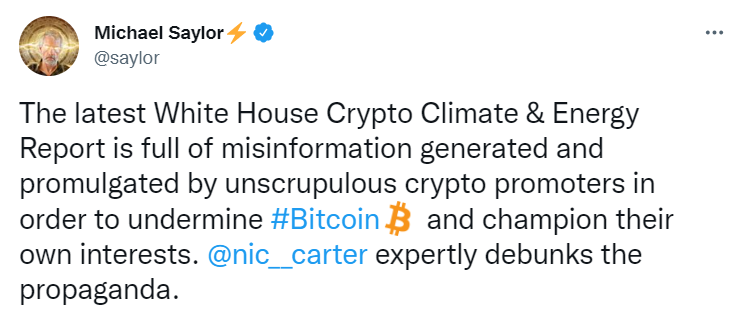The Recent White House Report Poses Challenges for Bitcoin
Written on
The Rise of Cryptocurrency Amidst Economic Challenges
Since the onset of the COVID-19 pandemic, the U.S. federal reserve has significantly increased the money supply, an action that many found staggering. With stimulus checks arriving in April 2020, a surge of "dumb money" entered the financial system as people found themselves confined to their homes. This situation led to a notable rise in self-sovereignty and a growing interest in cryptocurrency, resulting in skyrocketing prices for digital assets.
By November 2021, the global market capitalization of digital assets reached an impressive $3 trillion, coincidentally matching the $3 trillion printed by the federal reserve during 2020. Approximately 16% of American adults have ventured into the realm of digital assets.
Currently, the Biden administration is grappling with rising inflation, escalating energy costs, ongoing geopolitical tensions, and the recent phenomenon of many investors acquiring low-value cryptocurrencies that are plummeting in value. In response, President Biden signed an executive order directing the government to explore the advantages and risks associated with digital assets.
Key Priorities in the Executive Order
While I won't delve into every detail of the executive order, it's important to highlight the main aspects concerning Bitcoin. Over the past six months, various governmental agencies have collaborated to formulate policy recommendations for digital assets. The six primary areas of focus include:
- Consumer and investor protection
- Financial stability
- Illicit activities
- U.S. competitiveness on a global level
- Financial inclusion
- Responsible innovation
For those unfamiliar with U.S. governance, an executive order is a common presidential tool that often stirs controversy. Most presidents have issued at least one without providing prior explanations.
The executive order's relevance to Bitcoin is evident in the following excerpt: "The Department of Energy, the Environmental Protection Agency, and other agencies will consider further tracking the environmental impacts of digital assets, developing performance standards as necessary, and equipping local authorities with the necessary tools and resources to mitigate environmental harm."
The energy consumption associated with cryptocurrency mining can lead to significant greenhouse gas emissions, strain electricity grids, and adversely affect local communities through noise and water pollution. The order suggests there are opportunities to align the growth of digital assets with transitioning to a net-zero emissions economy and enhancing environmental justice.
This point subtly alludes to Bitcoin's Proof-of-Work model. President Biden underscored the substantial energy costs associated with digital currencies like Bitcoin. The White House even indicated that if attempts to make mining more environmentally friendly fail, energy-intensive mining practices, particularly Bitcoin mining, might face restrictions or bans.
Michael Saylor's Response
Famed Bitcoin advocate Michael Saylor quickly responded to the executive order on his Twitter account and blog.

On his blog, Saylor robustly counters the climate arguments against Bitcoin, addressing seven key areas. Some of his significant claims include:
- "Bitcoin mining is the most efficient and cleanest industrial use of electricity, improving its energy efficiency faster than any major industry."
- "Our data indicates that approximately 59.5% of energy for Bitcoin mining is sourced from sustainable energy, with energy efficiency improving by 46% year-over-year. No other sector comes close."
- "The Bitcoin network is continuously becoming more energy efficient due to ongoing advancements in semiconductor technology and the halving of Bitcoin mining rewards every four years, which is built into the protocol."
When one examines the data beyond sensational headlines, it's clear that the cryptocurrency sector is actively addressing the climate debate. Saylor's assertions hold merit. A January 2021 report from the Bitcoin Mining Council (BMC) suggested that by Q4 2021, the global mining industry operated on an estimated 58.5% renewable energy. This significant reliance on clean energy stems from the industry's need to mitigate political pressures and enhance environmental responsibility, ultimately proving to be more profitable for miners.
For more insights, follow me on Medium, LinkedIn, or Twitter.
This article serves informational purposes only and should not be construed as financial, tax, or legal advice. Always consult a financial professional before making substantial financial decisions.